Abul Rizvi has a history of underestimating net overseas migration (NOM) numbers.
In July 2020 Rizvi predicted that Australia’s NOM would not exceed 200,000 in a year this decade:

Australia’s NOM then hit an all-time high 387,000 in the 2022 calendar year:
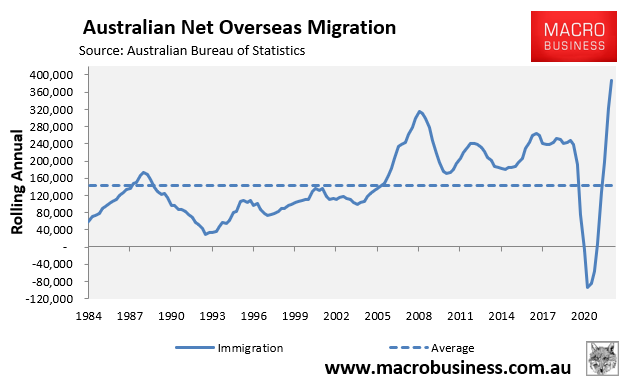
The May federal budget projected that Australia’s NOM would hit an all-time high 400,000 in the 2022-23 financial year, followed by 315,000 in 2023-24:

Source: 2023 federal Budget
Rizvi has then spent the past four months ridiculing the budget’s projection claiming it is overstated (see here).
After last week’s June quarter national accounts suggested that Australia’s population had ballooned by an unprecedented 626,000 in the 2022-23 calendar year, Rizvi went into full attack mode rubbishing the figure and those like me that reported it:
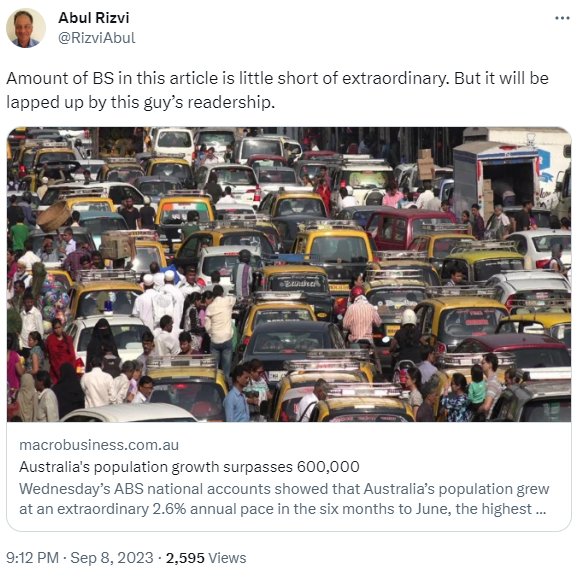
Rizvi even tried to claim that Australia is not experiencing a per capita recession:

Rizvi based his entire argument on the monthly net permanent and long-term arrivals stats, which typically correlated strongly with the quarterly NOM.
However, on Tuesday, the ABS released data to July showing this series hitting an all-time high 399,550 over the year:
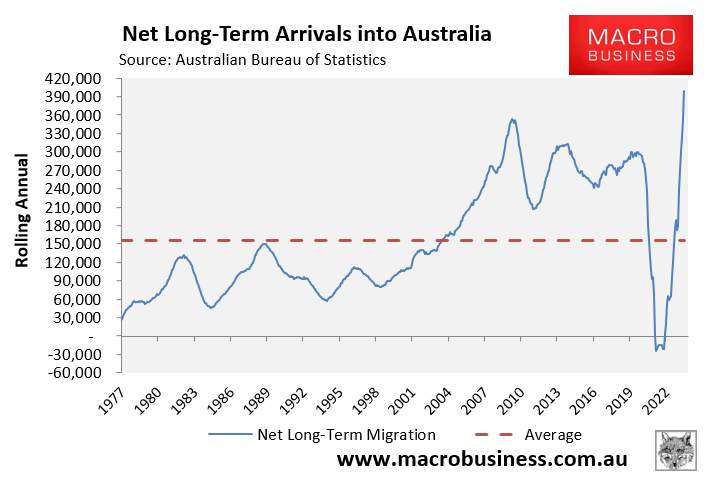
Based on historical correlations, this data suggests that Australia’s NOM will have blown past the federal budget’s 400,000 projection for 2022-23; although we won’t know for sure until the official data is released in December:

Sensing that NOM is higher than he thought, Rizvi is now furiously hedging his bets.
On Tuesday, he published an article warning that NOM has continued to rise in Q3 and that Australia will likely record another quarter of negative per capita GDP growth.
However, he still claims the federal budget and ABS are wrong about the 2022-23 population/immigration numbers:
“The reference to a per capita recession in the June quarter is somewhat misleading because we will not know the actual outcome for net migration in the June quarter (as opposed to a very preliminary estimate) for another 6-12 months”.
“Net long-term and permanent movements in the June quarter was much lower than the ‘population clock’ (something of a gimmick) used by the ABS suggests”.
“In July 2023 there was a large surge in student and other temporary (employment) numbers leading to a record level of temporary entrants in Australia (see Table 1) as well as a net return of Australian citizens”.
“This suggests net migration in the September quarter of 2023 will be much higher than in the June quarter (increasing the likelihood of another quarter of negative per capita GDP)”.
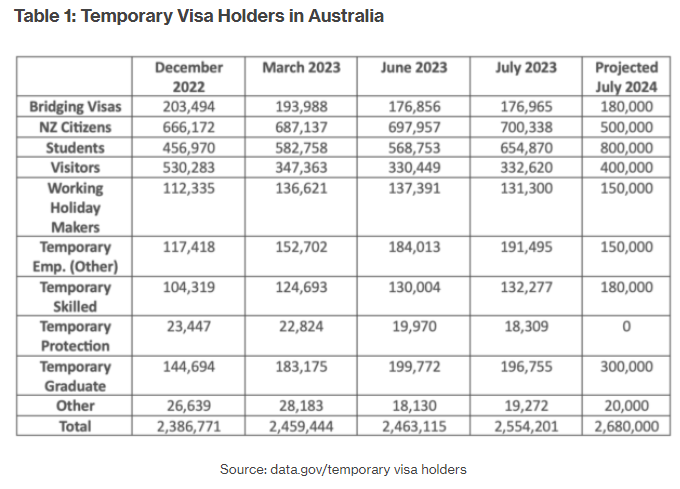
“With tightening of monetary and fiscal policy gradually taking increased effect and a higher level of net migration in the September quarter compared to the June quarter, it is highly likely per capita GDP in the September quarter will be negative. The media will then report we have had three consecutive quarters of negative per capita GDP (even though the June quarter was not negative if more accurate net migration estimates are used)”.
“For the longer-term, the Albanese Government has gradually removed covid era immigration policy settings and introduced other policy tightening. It is likely to introduce further tightening in the coming months. That will reduce net migration for the whole of 23-24 which is highly unlikely to reach the revised Treasury forecast of 315,000 (just as net migration is unlikely to reach the revised Treasury forecast of net migration in 22-23 of 400,000) but will be well above the long-term assumption of net migration of 235,000 per annum in the recent Intergenerational Report”.
So, Australia will experience much higher immigration in Q3, but the 2022-23 and 2023-24 NOM figures will still come in lower than the federal budget’s projection, according to Rizvi.

That is a bold prediction given the Department of Home Affairs recorded massive temporary visa growth over the 2022-23 financial year:
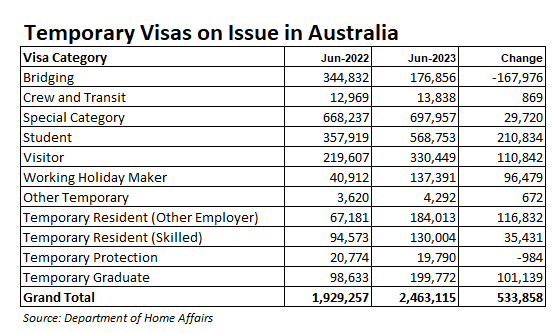
This was led by a 311,000 increase in student and graduate visas, alongside a 249,000 increase in employment visas (i.e. WHM, skilled and other employer).
The ABS’ net visa arrivals data (excluding visitors) also recorded a massive 452,000 increase over the 2022-23 financial year, led by 253,000 student visas and 142,000 work visas:
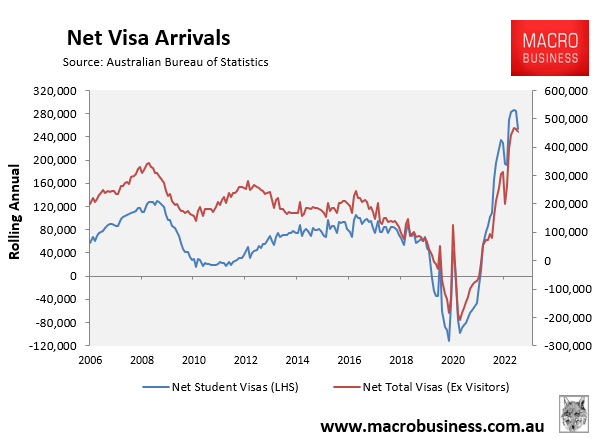
Based on the above data, it seems likely the official NOM figures will easily exceed the federal budget’s projection for 2022-23. What will happen in 2023-24 obviously remains to be seen.
On Tuesday, AMP chief economist Shane Oliver appeared at the AFR Property Forum where he blamed Australia’s housing crisis on decades of high immigration. Both Oliver and respected property analyst Louis Christopher then called for a migration cap (see here).
Shane Oliver also posted the below chart on Twitter, which was reposted far and wide and resulted in furious responses from Rizvi:
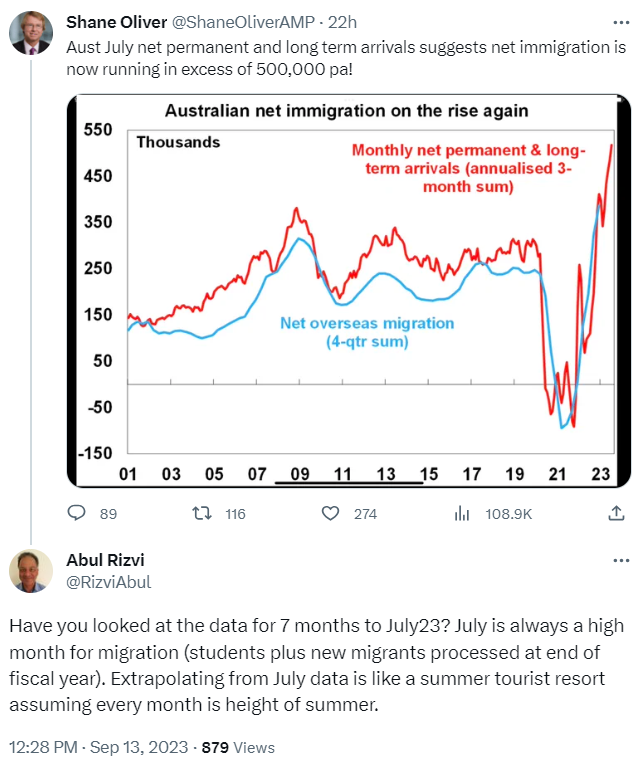
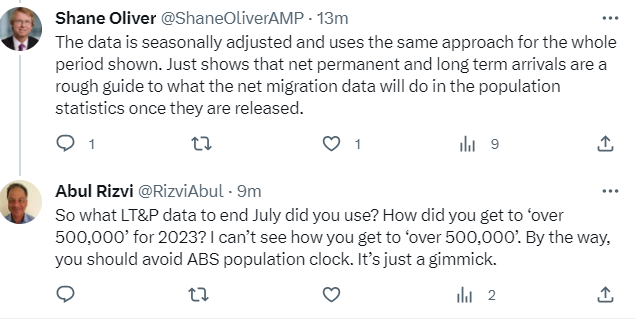

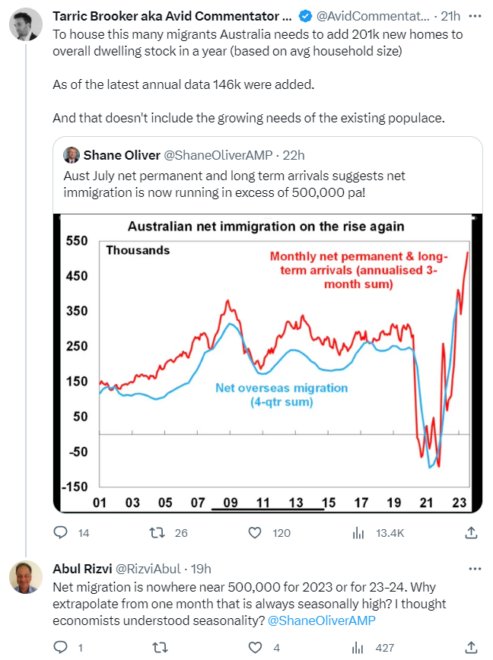
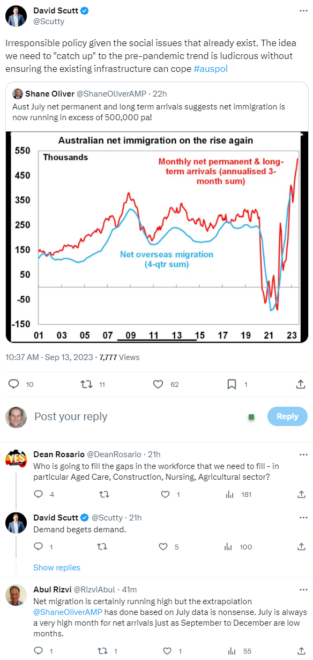
Abul Rizvi is losing the narrative on immigration. It is about time. He has been wrong for too long.
Anybody can see that immigration numbers are far too high, are not supported by the Australian public, and are driving the nation’s rental crisis.

